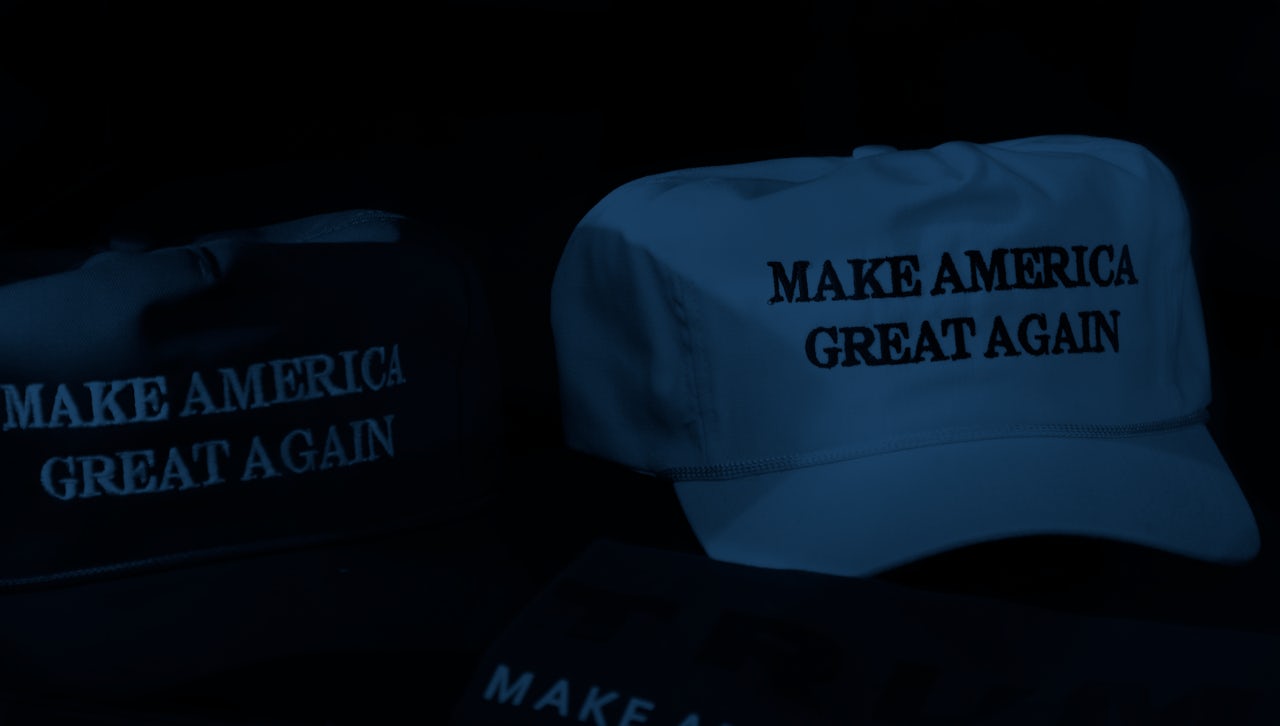The initial shock around Donald Trump’s election win has morphed into national horror. After naming white nationalist Steve Bannon as his top advisor, Trump is continuing his streak of terrifying ideas by moving forward with one of his most extreme propositions. According to Reuters, Kris Kobach, a hardline Republican responsible for some of the most drastic immigration laws in the country, is advising Trump on ways to implement an all-out ban on Muslim immigration, as well as developing a database in which to register the country’s Muslim population.
As Trump reiterated throughout the campaign, these measures would be in place until “we can figure out what is going on,” which could be indefinite. The Wall Street Journal reports that Trump is also receiving advice from Frank Gaffney, president of the Center for Security Policy. The Southern Poverty Law Center describes Gaffney as "one of America’s most notorious Islamophobes.” His writing for the inflammatory publication Breitbart seems to support the description. In one article he claimed that the logo of the Missile Defense Agency had been redesigned to be “a morphing of the Islamic crescent and star with the Obama campaign logo.”
Trump’s Muslim registry isn’t entirely unprecedented. After 9/11, the Bush Administration established the National Security Entry-Exit Registration System, or NSEERS. Under the program, as Vox explains, certain “foreign citizens and nationals” in the US had to comply with special fingerprint registrations, photos, and interviews on a recurring basis. “It only applied to men over the age of 16. And it only applied to people from a list of countries the Bush administration considered “havens for terrorists,” Vox writes. “There were 25 countries on the “special registration” list. Twenty-four were majority-Muslim countries. The 25th was North Korea.” By 2003, more than 13,000 registrants had been placed in deportation proceedings, as a study conducted by Penn State Law and Rights Working Group discovered, with a number of families being torn apart in the process.
“The initial shock around Donald Trump’s election win has morphed into national horror.”
The NSEERS program received a significant amount of pushback, with many critics voicing concerns about racial profiling. The program was also tremendously ineffective. By treating all people from particular countries as suspects, officials made it increasingly difficult to build trust within those communities. Many critics of the program also pointed to the fact that most attacks are carried out by US citizens, making the act of registering travelers from foreign countries more or less useless. In 2011, the Obama administration effectively killed NSEERS by removing all 25 countries from the special registration list.
Immediately following Trump’s win on election night, a wave of violence against Muslim-Americans swept across the country.
In his first interview as president-elect, Trump told 60 Minutes he had no knowledge of the attacks and implored his supporters who might feel compelled to carry out coordinated assaults on American citizens designed to instil fear (AKA terrorism) to “stop it.”
Correction: This post has been updated to reflect that the Obama administration removed all the countries from NSEERS in 2011, not 2012, and to remove a reference to a viral Facebook post about anti-Muslim harassment at a Walmart that was shown to be fabricated. This article has also been updated to correctly attribute news sources.
